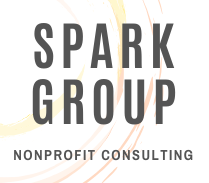Reducing Nonprofit Employee Turnover: Strategies to Prevent High Turnover in Nonprofits
Employee turnover refers to the rate employees leave an organization, and the org then replaces them with new hires. It is typically expressed as a percentage and represents the proportion of employees who exit the organization within a specified time period, usually annually. Turnover can occur voluntarily, when employees resign, retire, or involuntarily, through termination or dismissal. High turnover rates can indicate challenges in employee retention and may have significant implications for organizational productivity, morale, and financial stability.
Employee turnover within nonprofits poses a significant challenge, with statistics indicating an average turnover rate of 19%, compared to the 12% average across all sectors. This disparity highlights the need for effective strategies to retain valuable staff members. Factors contributing to high turnover in nonprofits include emotionally demanding roles, lower wages, and inflexible job requirements. However, with proactive measures, organizations can mitigate turnover and foster a more stable and engaged workforce.
Understanding the Cost of Turnover
Before implementing strategies to address turnover, nonprofits must grasp the cost of losing employees. Turnover incurs expenses related to recruitment, training, and lost productivity. By thoroughly analyzing these costs, organizations can gain insight into the financial impact of turnover and prioritize investments in employee retention strategies.
Strategies to Reduce Turnover
Invest in Competitive Wages: Nonprofits must recognize the importance of offering competitive salaries to attract and retain talent. Researching competitive wage rates in the local market enables organizations to adjust compensation packages accordingly. By reallocating funds and setting strategic goals to increase salaries over time, nonprofits can demonstrate their commitment to valuing employees' contributions.
Promote Collaboration and Empowerment: Cultivating a collaborative work environment empowers employees to contribute meaningfully to organizational goals. Involving staff members in decision-making processes, including staff in goal setting, program design, and evaluation, fosters a sense of ownership and engagement. Nonprofits can harness their collective expertise and creativity by soliciting input and actively listening to employees' perspectives.
Offer Comprehensive Benefits: Recognizing the demanding nature of nonprofit work, organizations must prioritize employee well-being by providing robust benefits packages. Generous paid time-off policies, flexible work arrangements, and opportunities for remote work can help alleviate stress and promote work-life balance. Nonprofits can enhance job satisfaction and retention by demonstrating a commitment to supporting staff members' personal and professional needs.
The Importance of Employee Retention
High turnover disrupts organizational continuity and undermines relationships with clients, donors, and volunteers. Retaining experienced staff members is essential for preserving institutional memory, sustaining programmatic impact, and fostering long-term partnerships. By prioritizing employee retention efforts, nonprofits can strengthen their capacity to achieve their mission and drive sustainable growth.
Partnering with Spark Group Consulting
At Spark Group Consulting, we understand nonprofits' challenges in retaining talented staff members. Our comprehensive suite of services, including Executive Leadership Coaching, Professional Development, and Leadership Training, equips organizations with the tools and strategies needed to cultivate a resilient and engaged workforce. Contact us today to explore how we can support your organization in addressing turnover and maximizing its impact.
In conclusion, combating high turnover in nonprofits requires a multifaceted approach encompassing competitive compensation, collaborative decision-making, and comprehensive benefits. Organizations can foster a culture of engagement, resilience, and sustainable growth by prioritizing employee retention efforts. Together, we can build more vital, more effective nonprofits that make a lasting difference in our communities.




